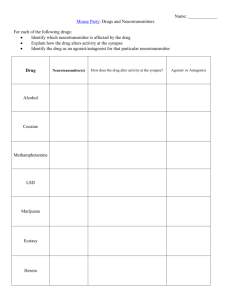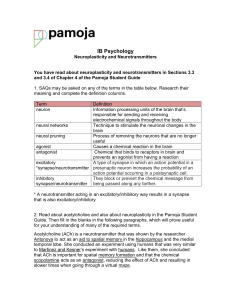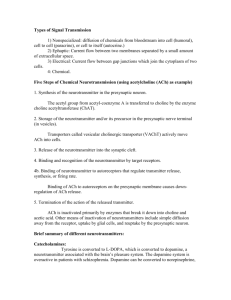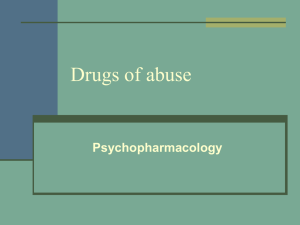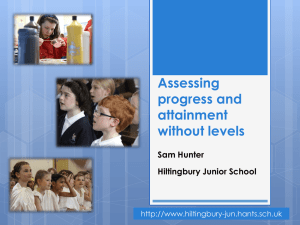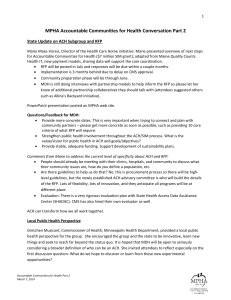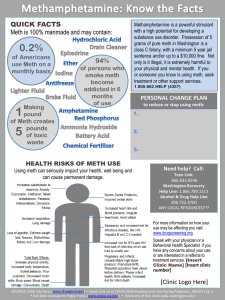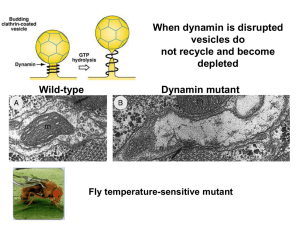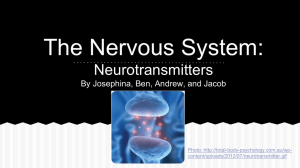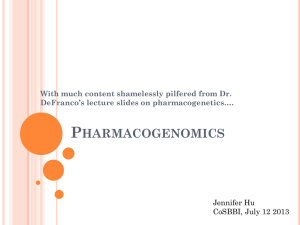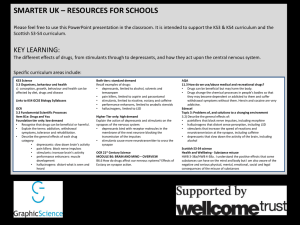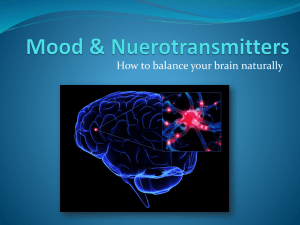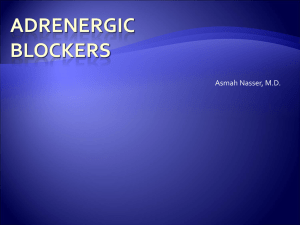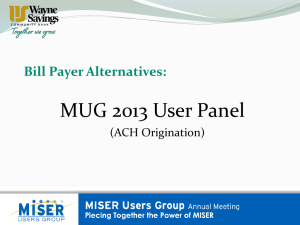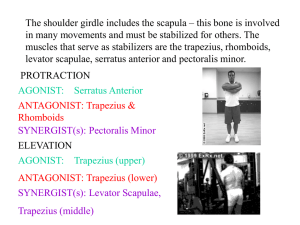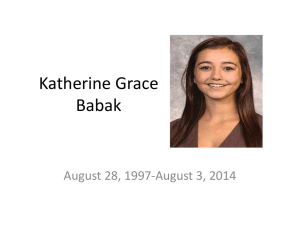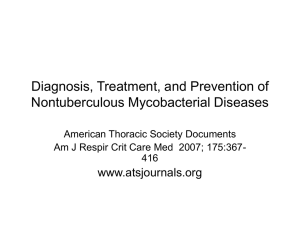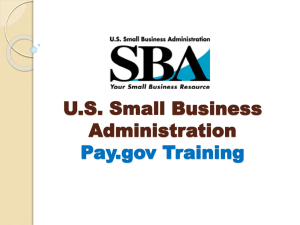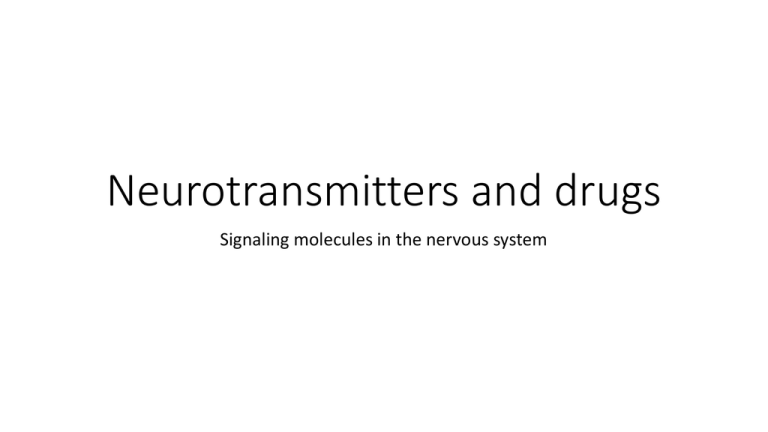
Neurotransmitters and drugs
Signaling molecules in the nervous system
Homework due: NTM – Job analogy
• Neurotransmitter worksheet
• For each NTM on the sheet, describe a job that is similar
Neurotransmitter (NT):
A chemical in our nervous system that transmits info between
neurons
Copy the chart on the board and fill in the name, E
or I, effects and drug interactions for the following
NTMs:
• Serotonin
• Dopamine
• GABA
• Glutamate
• Norepinephrine
• Acetylcholine
Which neurotransmitter?
• Jodie is depressed. She most likely has low levels of _________
• John is a stressed out business man. To reduce his anxiety he takes
Xanax, a medication that increases ________, and calms his brain.
• LSD causes hallucinations, which are similar to dreams. They are
caused by _________
• Botox freezes facial muscles. It blocks the release of ________
• Samuel is a schizophrenic homeless man. He hears voices, is
paranoid and has twitchy movements. He has elevated levels of
______
• James is a meth addict. He just smoked some. He hears voices, is
paranoid and has twitchy movements. He has elevated levels of
______
• Thanksgiving dinner makes you sleepy. That’s because turkey
containts a chemical precursor to _________, which regulates
sleep
• Prozac and other antidepressants prevent reuptake of ________,
thus keeping it in the synapse where it is active
What kind of neurotransmitter are you?
• http://archives.drugabuse.gov/havefun/what_neurotransmitter_pop
up.php
Agonists and Antagonists
How many ways can an NTM be increased or decreased in the images below?
Increasing and decreasing the effect of NTMs
Agonist:
A drug (or poison) increases activity of a NTM. How?
• Mimics shape
• Prevents reuptake by pre-synaptic neuron
• Blocks enzymes that break down NTM in synapse
Antagonist:
A drug (or poison) that reduces NTM activity
• Blocks release of NTM from its terminal button
• Blocks receptor on post synaptic dendrite
Agonist or antagonist?
• Botox blocks the release of ACh, which temporarily
paralyzes facial muscles (and reduces wrinkles)
• Pfizer just created a new drug improves mood by binding
to serotonin receptors and stimulating an action potential
• Synthesis inhibitors are chemicals that slow down the
creation of a neurotransmitter molecules
• Prozac and other antidepressants are SSRI drugs: selective
serotonin reuptake inhibitors
• Black widow spider poison causes neurons to release ALL
their ACh, depleting their supply. Then they have none,
preventing the cell from functioning (causes death)
Different neurotransmitters do different things!
Acetylcholine (ACh):
NT that affects learning and memory (in the brain), and
movement (in muscles)
Alzheimer’s patients have lower levels of ACh.
This American Life: A Trip Down Memory Lane
Botulinum poison:
An antagonist that blocks the release of
Ach, can paralyze diaphragm muscles
and stop breathing
Botox: Before and After
Curare:
Antagonist for Ach, leads to paralysis.
S. American Indians use it for hunting.
Black widow spider poison:
Ach agonist, causes flood of Ach, the
Ach runs out
S. American Indian Hunters
Dopamine:
Reward and motivation
Rewarding/pleasurable:
eating, drinking, sex
Motor control over voluntary
Low levels Parkinson’s
Parkinson’s treatments can cause
symptoms of schizophrenia
(losing touch with reality, hallucinations,
false beliefs, etc.)
This American Life: Schizophrenia
Michael J Fox Interview
Amphetamines and cocaine:
Dopamine ____________
“High” arousal state followed by a crash
Other examples:
Painkillers, caffeine, nicotine
Serotonin:
Emotional states/mood, impulsiveness, sleep and dreaming
Norepinephrine:
Alertness, higher mood level, focus and concentration
Low levels of these NTs are related to depression,
sadness/anxiety, food cravings, and aggressive behavior.
Antidepressants are ____________ for them, as well as drugs
for eating disorders, OCD, and obesity.
Ex. Prozac, Paxil, Zoloft, Cymbalta, Pristiq, and Effexor
GABA (gamma-aminobutyric acid):
the main inhibitory NT, keeps brain from getting too
aroused/over-excited
Lowers arousal/anxiety and helps regulate movement
Antianxiety drugs (tranquilizers) are ____________ for GABA
Glutamate:
the main excitatory NT, memory storage and pain perception
High levels can cause neuron death, low levels can cause
coma
Glutamate may be linked to schizophrenia
Endorphins:
NT involved in pain relief and pleasure
Higher endorphins levels have been found in runners postmarathons and in women during childbirth
Morphine and heroin mimic endorphins, and cause a release
of dopamine
Is it linked to acupuncture?
Reading quiz
1. Which neurotransmitter is involved in
1.
2.
3.
4.
Muscle movement
Pleasure/reward
Mood
Sleep/dreams/hallucinations
2. An agonist/antagonist reduces the effect of
neurotransmitters in the synapse (which one?)
3. Botulinum toxin blocks the release of Ach. This
makes it an agonist/antagonist
Drugs
• Drugs are chemicals that interact with neurotransmitters
• Agonistic or antagonistic mechanisms
• Can be taken orally, inhaled, smoked, injected or through the skin
• Illegal and therefore unregulated
• Contaminated/diluted
• Dangerous
Source: Substance Abuse and Mental Health
Services Administration, 2005
Socratic Seminar Rules
• Call people by name
• Attack ideas not people
• Yes, and… always add to a comment, it’s not enough to simply agree
• 3 before me. Give others a chance to speak
• Don’t hog the mic
You will turn in your partner evaluation and be graded on how
thoughtfully you assess your partner, plus your 2 homework questions.
Explore: Drugs of abuse
Due next class if not finished today
http://learn.genetics.utah.edu/content/addicti
on/abuse/
• Watch 3 or 4 animations, your choice which ones.
• Flow chart: profile of a drug. Pick ONE.
• Make a graphic organizer/flowchart that shows the
following:
• Names (include several) drug is known by
• Context: typical place this drug is used, or typical person who
uses it
• Effects/sensations experienced
• Risks/dangers
• One statistic or historical anecdote about this drug (look up
online)
http://learn.genetics.utah.edu/content/addiction/
drugs/mouse.html
Choose 4 of the drugs on mouse party and see how they
work internally, at the synapse. For each one, write the
following:
1) Name of drug
2) Neurotransmitters it interacts with
3) Agonist or antagonist
4) Labeled diagram of the synapse, the drug,
neurotransmitters and receptors.
5) Regions/circuits of the brain affected by this drug
Meth – a life destroying drug
https://www.youtube.com/watch?v=T-duk-PiIXo – meth in the brain
www.methproject.org/
1) Click on the links under "get answers". Explore the site: read, watch the videos, play
the games.
2) Day in the life of a meth addict. Create a profile of a person who’s addicted to meth.
What is a typical day like for them?
A.
Write a diary excerpt of a typical day from their perspective.
3) Finally, click the link on the right "view ads" to watch some of the famous television
commercials produced by the meth project.
4) Don't take meth!
10 ways drugs will ruin a date
http://www.youtube.com/watch?v=xEht8tKKw
VQ&list=PL8CD42150CBB6EFA8

